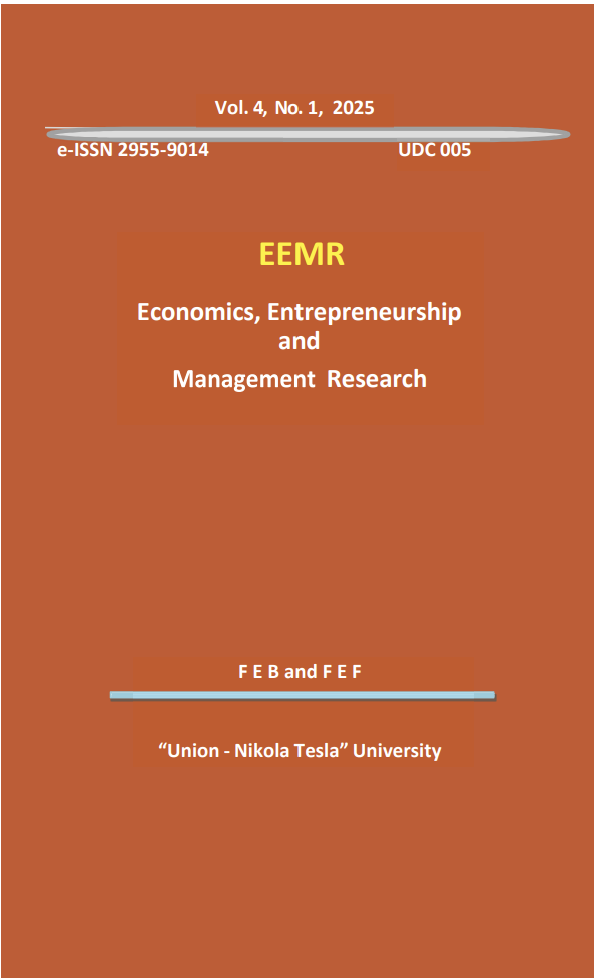The Impact of Global Economic Crises on Serbia
DOI:
https://doi.org/10.62907/eemr250401038rKeywords:
Global crisis, Serbia, financial crisis, COVID-19 pandemic, war in Ukraine, inflation, macroeconomic policy, resilience, fiscal response, monetary policyAbstract
This paper provides an in-depth analysis of the effects that major global economic crises have had on Serbia, a small and open transitional economy, over the past twenty years. The paper examines four key crises: the 2008 global financial crisis, the COVID-19 pandemic, the war in Ukraine accompanied by an energy crisis, and the recent wave of global inflation. Each of these crises is explored through the lens of their origins, transmission mechanisms, and specific impact on Serbia’s macroeconomic indicators— particularly GDP growth, employment, inflation, investment, and public debt.
The paper also analyzes the Serbian government’s policy responses, including monetary and fiscal measures, and evaluates their short-term and long-term effectiveness. Special attention is given to the role of institutions, external dependencies (such as foreign investment and energy imports), and the structural challenges of the Serbian economy.
Findings suggest that although Serbia managed to implement some stabilizing policies, the country’s limited institutional capacity, high external exposure, and lack of structural preparedness reduced the overall effectiveness of crisis management. The paper concludes that building economic resilience must become a long-term strategic goal, focusing on diversification, digitalization, social safety nets, and institutional reform in order to mitigate the effects of future global shocks.
Downloads
References
1. International Monetary Fund (IMF). World Economic Outlook Reports. Retrieved
from https://imf.org
2. Jovanović, M. (2021). The Impact of the Pandemic on Serbia’s Labor Market. Economic Horizons.
3. Ministry of Finance of the Republic of Serbia. Budget and Fiscal Strategy Reports. Retrieved from https://mfin.gov.rs
4. National Bank of Serbia (NBS). (2020–2024). Inflation Reports. Retrieved from https://nbs.rs Statistical Office of the Republic of Serbia (RZS). (2020–2024).
5. Nova Ekonomija. (2022). Inflation in Serbia Hits Records: Food and Energy Prices Soar. Retrieved from https://novaekonomija.rs
6. Petrović, D. (2020). Serbia’s Fiscal Policy Response to the COVID-19 Crisis. Finance and Development.
7. Releases on GDP, Employment, and Foreign Trade. Retrieved from https://stat.gov.rs
8. Regional and EU Statistical Data. Retrieved from https://www.oecd.orgEurostat. Retrieved from https://ec.europa.eu/eurostatBiznis.rs. (2021).
9. Serbia in Recession 2020: Depth of the Decline and Most Affected Sectors. Retrieved from https://biznis.rs
10. World Bank. Global Economic Prospects. Retrieved from https://www.worldbank.orgOECD.





